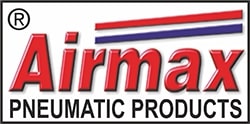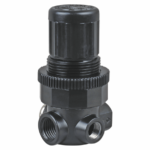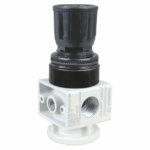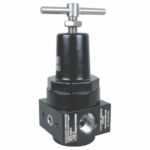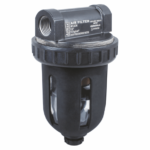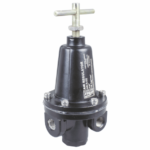How RPM Affects Rotary Joint Performance: Design, Seal Life & Bearing Load
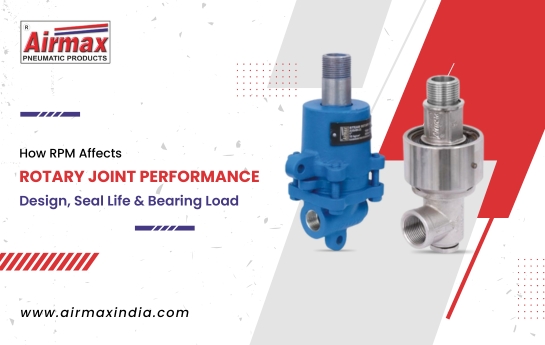
In modern manufacturing, high-speed rotary joints play a crucial role in ensuring smooth fluid or air transfer between stationary supply lines and rotating equipment. However, one key factor that determines their efficiency and service life is rotational speed (RPM). Whether you are running a textile machine, a printing press, or an automated assembly line, overlooking RPM limits can lead to excessive wear, seal failure, and costly downtime.
In this article, we explore how RPM impacts the performance of rotary joints, what design considerations are vital, how seal life and bearing load are affected, and what speed limits you should keep in mind when selecting a high-speed rotary joint for your application.
Understanding Rotary Joint Design for High-Speed Applications
A rotary joint (also known as a rotary union) is designed to allow the transfer of media such as steam, water, air, or oil between stationary and rotating parts. At low to moderate speeds, standard designs perform well. However, as RPM increases, the dynamic forces acting on the internal components change significantly.
📌 Learn the fundamentals first in our blog: What is a Rotary Joint? Comprehensive Look at This Key Industrial Component
When choosing a high-speed rotary union, design factors such as:
Housing material and precision machining, Seal technology (carbon-graphite, mechanical seals, or advanced polymers) bearing selection (ball bearings, tapered roller bearings, or hybrid ceramic bearings) must all be considered.
For example, a high-speed pneumatic rotary union in a packaging line must handle rapid rotations without generating excessive heat or friction. A poorly matched design can lead to instability, vibration, and uneven wear· That’s why Airmax engineers focus on advanced seal geometries and precision-ground surfaces to ensure that the joint operates reliably even at elevated speeds.
RPM and Its Direct Impact on Seal Life:
One of the most sensitive components in any rotary joint is its sealing system· Seals maintain pressure while allowing rotation, but they are directly exposed to frictional forces.
At lower RPMs, seals operate within their intended friction and temperature range.
At high RPMs, frictional heat builds up faster, potentially causing seal deformation, thermal expansion, or even catastrophic leakage·
This is especially critical in a high-speed rotary joint carrying steam or hot oil, where both high temperature and high speed combine to create challenging operating conditions.
Read more about thermal challenges in our post: High-Temperature Rotary Joints
Tips to Maximize Seal Life at High Speeds:
- Choose seal materials with low friction coefficients and high thermal resistance.
- Ensure proper lubrication of the sealing surface.
- Maintain clean media to avoid abrasive particles damaging the seal.
- Select a rotary joint with speed ratings suitable for your application.
Airmax designs incorporate self-lubricating materials and optimized seal faces to reduce wear and prolong service intervals even in demanding environments.
Bearing Load and RPM: A Balancing Act
Bearings are another critical element in rotary joints. They support the rotating shaft and absorb both radial and axial loads. As RPM increases, the forces acting on the bearings multiply. This can lead to:
- Increased operating temperatures
- Lubricant breakdown
- Reduced bearing life
A high-speed rotary union, therefore, needs bearings that are specifically designed to handle these conditions. Precision-grade ball bearings or hybrid ceramic bearings are often used in Airmax high-speed models, ensuring minimal vibration and optimal alignment even when running continuously at thousands of revolutions per minute.
How to Protect Bearings in High-Speed Rotary Joints:
- Ensure correct preload and alignment during installation.
- Use high-quality lubrication suited for the operating temperature and speed.
- Regularly monitor vibration and noise levels to detect early signs of wear.
With proper selection and maintenance, you can dramatically extend bearing life and reduce unplanned downtime.
Understanding Rotary Union Speed Limits
Every rotary joint or union has a manufacturer-specified speed limit. Exceeding this limit doesn’t just risk seal or bearing failure; it can lead to dangerous operating conditions.
For example:
- A standard rotary joint may handle up to 500 RPM.
- A high-speed rotary union designed for CNC machining or printing could comfortably operate at 3,000 RPM or more.
- A high-speed pneumatic rotary union for robotics might exceed 6,000 RPM, depending on design.
📌 Explore rotary unions for fluid media like water in our dedicated post: Water Rotary Joints: Essential Components for Fluid Transfer in Industries
Airmax provides detailed speed ratings for each model, taking into account not just the bearings and seals but also the pressure, media type, and temperature conditions. Always check these specifications before selecting a joint for your system.
Selecting the Right High-Speed Rotary Joint:
When it comes to high-speed rotary joints, one size does not fit all. Here’s what you should evaluate before purchasing:
- RPM Requirements: Calculate the maximum operating speed of your equipment and choose a joint with an appropriate margin.
- Media Type: Steam, water, air, and hydraulic oil all have different sealing and lubrication demands.
- Operating Pressure & Temperature: Higher pressures and temperatures demand stronger materials and advanced seal designs.
- Installation Space: Compact designs are ideal for robotics and packaging lines, while heavy-duty models suit large industrial rollers.
Airmax engineers work closely with OEMs and plant managers to recommend the ideal rotary union configuration, ensuring that speed limits and performance expectations are fully met.
Why Choose Airmax for High-Speed Rotary Unions?
At Airmax, we specialize in delivering rotary joints that combine cutting-edge design with robust performance. Our range of high-speed rotary joints and pneumatic rotary unions is built to handle demanding industrial environments while maximizing uptime. Key benefits include:
- Precision-engineered seals that minimize leakage and wear
- Bearings optimized for high-speed, high-load applications
- Proven speed limits tested under real-world conditions
- Comprehensive technical support and after-sales service
By selecting an Airmax rotary union, you’re investing in reliability, efficiency, and long-term cost savings.
Conclusion
RPM is far more than just a number on your machine’s specification sheet – it directly influences rotary joint design, seal life, and bearing load. Ignoring speed limits can lead to premature failures and unexpected downtime. By understanding these factors and choosing a high-speed rotary joint engineered for your application, you can achieve consistent performance and reduce maintenance costs.
Airmax stands ready to help you select the right rotary joint, ensuring that your equipment runs smoothly and efficiently, no matter how fast it spins. Explore our high-speed rotary joints and pneumatic rotary unions today, engineered for performance, built to last.
